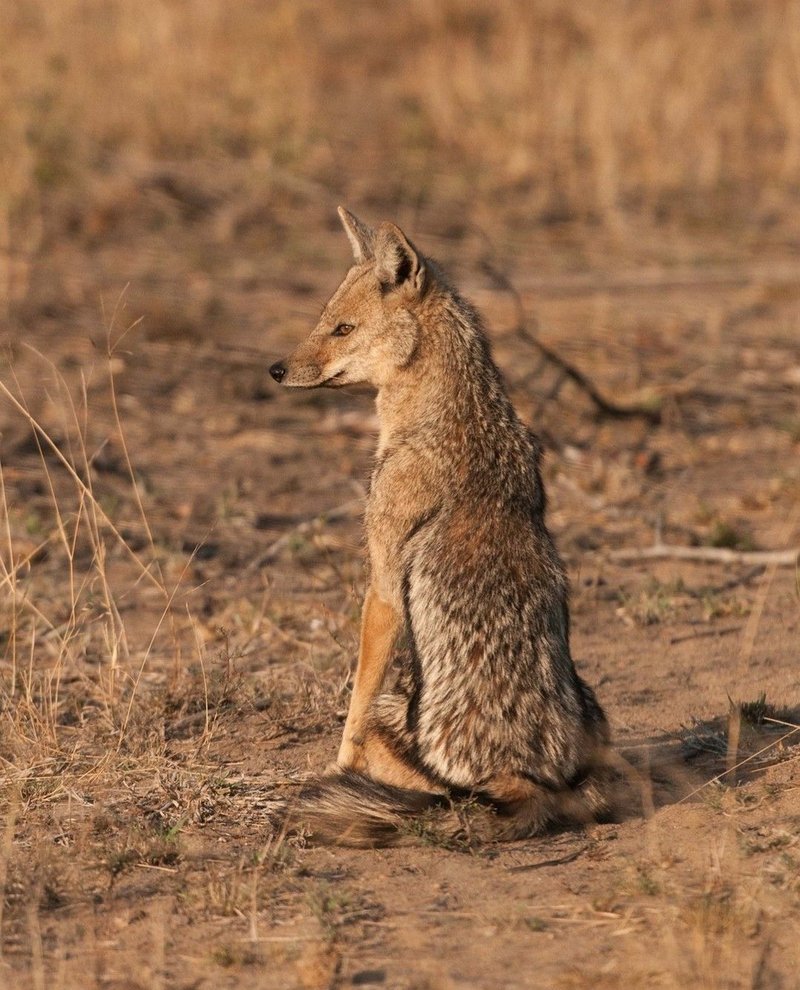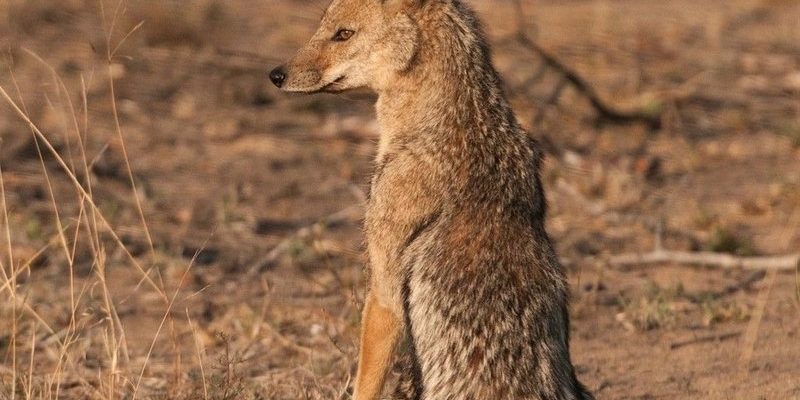
Side-striped jackals are not just your average jackal. Their gentle nature and social behavior set them apart. Found primarily in parts of southern Africa, these jackals live in family groups, and their method of raising pups is a great example of teamwork. Let’s dive into how these remarkable creatures nurture their young and what makes their parenting style so successful.
Family Structure of Side-Striped Jackals
Side-striped jackals typically live in small family units, usually consisting of a breeding pair and their offspring. This social structure is fundamental to how they raise their young. The *breeding pair* works together, sharing responsibilities for feeding and protecting the pups. Here’s a snapshot of their family dynamics:
- Breeding Pair: The dominant male and female are the primary caregivers.
- Offspring: Young jackals generally stay with their parents for up to a year, learning essential survival skills.
- Extended Family: Other adult jackals in the pack may help with the pups, making it a real family affair.
In the wild, teamwork is crucial. The breeding pair engages in activities like hunting together, bringing food back for the pups. It’s like preparing an elaborate feast, where everyone contributes. You might be wondering how they balance their roles—it’s all about communication and instinct. The male usually sets out to hunt, while the female stays back to care for the young.
Nesting and Den Sites
Finding the right home is essential for any parent, and side-striped jackals are no exception. They often dig dens in sandy soils or take over abandoned burrows. This shelter provides a safe haven for their pups, especially during the vulnerable early weeks.
Typically, these dens have specific features:
- Depth: Dens can vary in depth, offering protection from predators.
- Location: They’re strategically placed near water sources and food supply areas.
- Ventilation: Proper airflow is essential to keep the den comfortable for pups.
Once the pups are born, the female usually remains in the den, which serves as the heart of the family. It’s where the young jackals receive nourishment and grow strong. Here’s the thing: a safe den is like a cozy home base, allowing them to thrive until they’re ready to explore the world outside.
Feeding and Nourishment
Feeding the pups is a critical task for the side-striped jackals. Initially, the female provides milk, but as the pups grow, the family shifts to solid food. The parents hunt small mammals, birds, and even insects, bringing the prey back to the den.
Here’s how the feeding process generally unfolds:
- Hunting: The male does most of the hunting, usually at dawn or dusk when prey is more active.
- Regurgitation: Once they catch something, the adults will often chew the food and regurgitate it for the pups, making it easier for them to eat.
- Gradual Transition: As the pups mature, they start eating solid food, gradually learning to hunt small prey themselves.
This method of sharing food ensures that the young receive the nutrition they need. Honestly, it’s a bit like family meals at home, where everyone pitches in to create a delicious spread.
Teaching Young Jackals Survival Skills
As the pups grow, learning the ropes of survival becomes a priority. The parents play a huge role in teaching their young important skills. From social interactions with each other to hunting techniques, these lessons are crucial.
The teaching process can be broken down into a few key areas:
- Social Skills: Young jackals learn how to communicate and interact with others in the pack.
- Hunting Techniques: They practice chasing and stalking, often mimicking their parents.
- Exploration: The parents encourage the pups to venture outside the den, learning about their territory.
You might wonder how these lessons are delivered. It’s through observation and play. Pups engage in playful bouts with siblings, which helps develop their instincts. Imagine their playful antics—it’s like watching a playful game of tag where everyone’s learning while having fun!
Challenges and Threats
Raising young jackals isn’t without its challenges. Throughout their lives, pups face various threats that can impact their survival. From predators to harsh weather conditions, the side-striped jackals must remain vigilant.
Some of the primary challenges include:
- Predators: Larger animals, such as lions or hyenas, may threaten their den and family.
- Food Scarcity: In dry seasons, finding enough food can be tough, affecting the entire pack.
- Human Encroachment: Habitat loss due to human activities can disrupt their living spaces.
Parents need to be on high alert to protect their young, making every day a lesson in survival. Here’s the thing: just like any parent, they have to balance nurturing with protecting, constantly adapting to changes around them.
The Bonding Process
One of the most touching aspects of side-striped jackal parenting is the bond they form with their young. This bond is built on interaction, care, and shared experiences. Dogs, as we know, are social creatures. Jackals take this a step further, often engaging in affectionate behaviors that reinforce family ties.
This bonding includes:
- Grooming: Parents will groom their pups, which not only keeps them clean but also solidifies their relationship.
- Play: Roughhousing and play are essential, helping to teach social skills while strengthening bonds.
- Vocalizations: The family communicates through a variety of sounds, allowing them to express needs and feelings.
Through playful antics and nurturing touches, the pups learn to rely on their family. It’s like the close-knit bond found within our own families, where love and support create a strong foundation for growth.
Raising young side-striped jackals in the wild is a beautiful example of teamwork, love, and resilience. From digging dens to sharing food and teaching survival skills, these animals showcase the intricacies of parenting in the wild. It’s a testament to how family dynamics, communication, and community support help ensure the survival of their species.
As we observe these fascinating creatures, we can draw parallels to our own lives. Whether it’s sharing a meal, teaching valuable life lessons, or simply enjoying time together, parenting, in any form, carries its own unique challenges and joys. Understanding how side-striped jackals nurture their young deepens our appreciation for the wonders of nature and the bonds we share with our families, human or otherwise.

